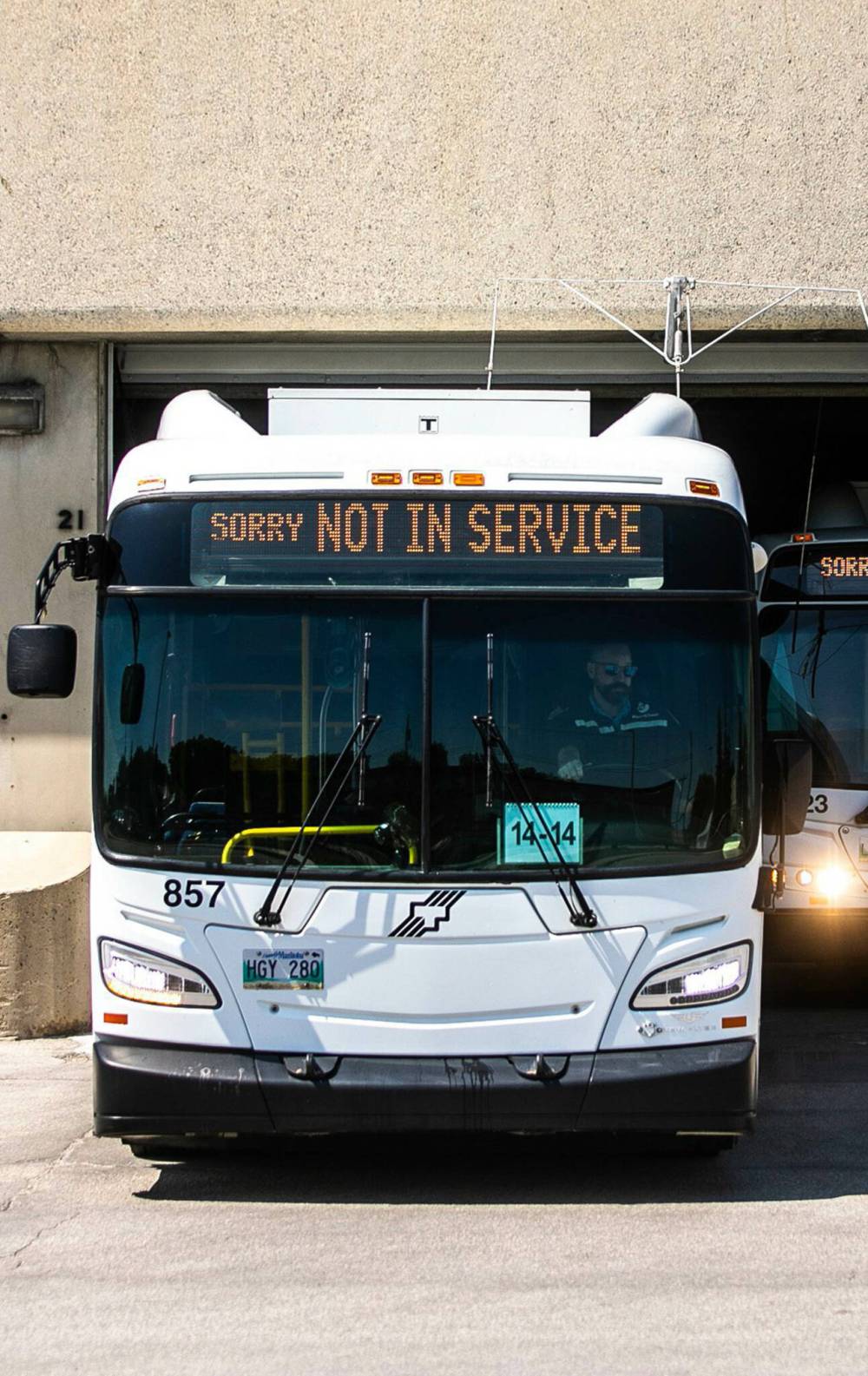A few Transit tweaks help, but aren’t a solution
Advertisement
Read this article for free:
or
Already have an account? Log in here »
To continue reading, please subscribe:
Monthly Digital Subscription
$0 for the first 4 weeks*
- Enjoy unlimited reading on winnipegfreepress.com
- Read the E-Edition, our digital replica newspaper
- Access News Break, our award-winning app
- Play interactive puzzles
*No charge for 4 weeks then price increases to the regular rate of $19.95 plus GST every four weeks. Offer available to new and qualified returning subscribers only. Cancel any time.
Monthly Digital Subscription
$4.99/week*
- Enjoy unlimited reading on winnipegfreepress.com
- Read the E-Edition, our digital replica newspaper
- Access News Break, our award-winning app
- Play interactive puzzles
*Billed as $19.95 plus GST every four weeks. Cancel any time.
To continue reading, please subscribe:
Add Free Press access to your Brandon Sun subscription for only an additional
$1 for the first 4 weeks*
*Your next subscription payment will increase by $1.00 and you will be charged $16.99 plus GST for four weeks. After four weeks, your payment will increase to $23.99 plus GST every four weeks.
Read unlimited articles for free today:
or
Already have an account? Log in here »
Winnipeg Transit has made some adjustments to its overhauled route system, the first since the original summer rollout that has left many riders frustrated.
Officials hope these tweaks will ease some of the pressure points that emerged almost immediately after the new network launched.
The changes are welcome. But they don’t come close to addressing the fundamental problems that continue to plague the system.

MIKAELA MACKENZIE / FREE PRESS
A Winnipeg Transit bus leaves the Fort Rouge garage.
The most visible improvements include relocating bus stops at six locations to make them more accessible, adding articulated buses on the F8 Pembina-Henderson Highway route to reduce crowding, expanding on-request service in growing communities, and adjusting timetables on three core routes — the D12 Ellice, D13 Sargent and D16 Academy-Notre Dame — that had particularly poor on-time performance.
Transit says these changes are the product of rider feedback, monitoring and analysis.
It’s a start. For the many Winnipeggers who rely on Transit every day, even modest changes can make the difference between catching a bus and missing one, or between being crammed shoulder-to-shoulder and having room to breathe.
The expansion of articulated buses, for example, should relieve overcrowding on a key corridor. Similarly, schedule adjustments may prevent the long delays that left some commuters stranded during peak hours.
But none of this resolves the bigger issues that have dogged the new system from the beginning.
One of the most common complaints from riders is the loss of bus stops. The network redesign was meant to streamline routes and move away from the traditional “every corner” service, favouring speed over proximity.
But in practice, this has left some riders — particularly seniors, people with mobility challenges and those living in neighbourhoods without dense service coverage — walking much farther to reach a stop. In a city where icy sidewalks and bitterly cold winters are a fact of life, that added distance is more than an inconvenience. It’s a barrier.
Another serious problem is the elimination of late-night bus service on many routes. Winnipeg already has limited transit service compared to other major Canadian cities. The new network has made this worse by cutting off options for workers who finish late shifts, as well as students and others who depend on transit after dark.
Expanding on-request service may help in some areas, but it is no substitute for reliable, fixed-route service at night.
Transit has said repeatedly that the new system will require time to settle, and that adjustments will be made along the way.
That is fair. Network redesigns are complicated, and no city gets it perfect on the first try. But there is a risk in leaning too heavily on the “tweaks” approach without addressing structural flaws.
The city has invested years of planning and millions of dollars into this overhaul. For the project to succeed, officials must be more ambitious in responding to legitimate criticism.
That means a serious re-examination of late-night service, a broader review of stop removals, and a commitment to ensuring the system works for people with disabilities and others who face barriers.
Without those changes, Transit risks losing riders permanently, undermining one of the core goals of the redesign: to make transit a more attractive alternative to driving.
To its credit, Transit has shown it is listening and willing to make changes. But Winnipeg’s Transit users deserve more than tinkering at the margins. They deserve a system that is reliable, accessible and designed around the real lives of the people who use it.
Until those deeper changes are made, the frustrations many riders feel will persist.





